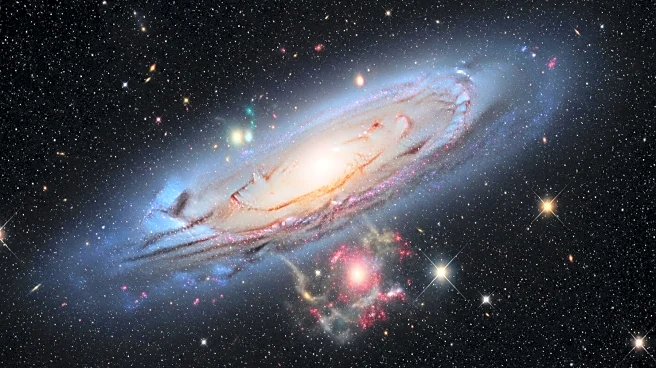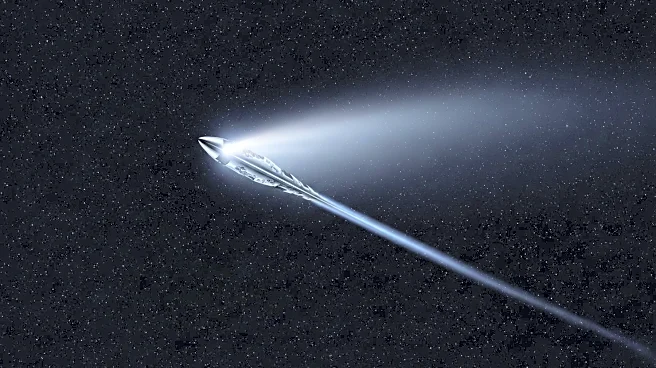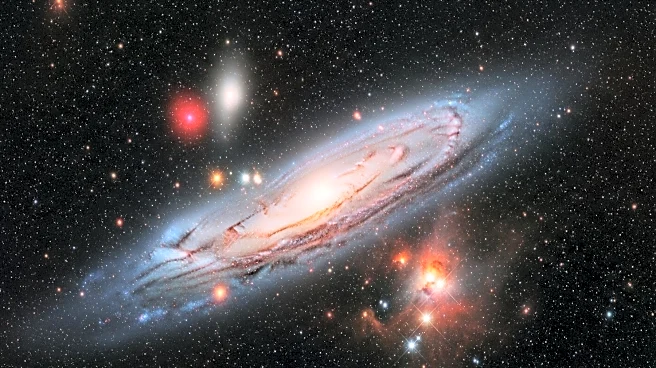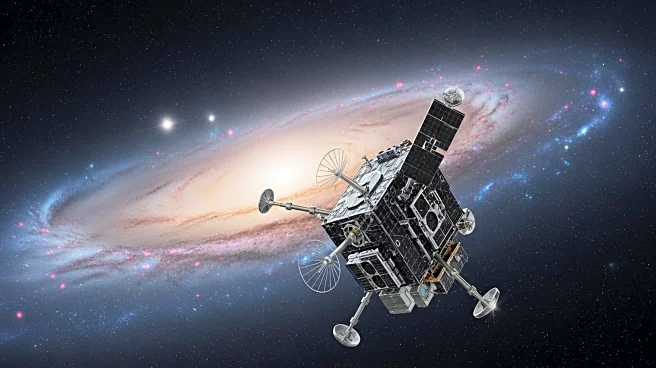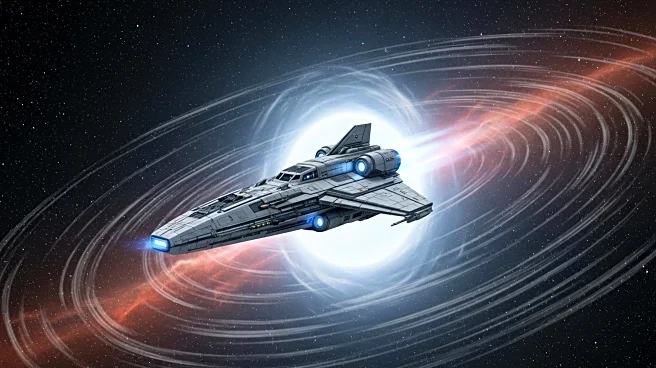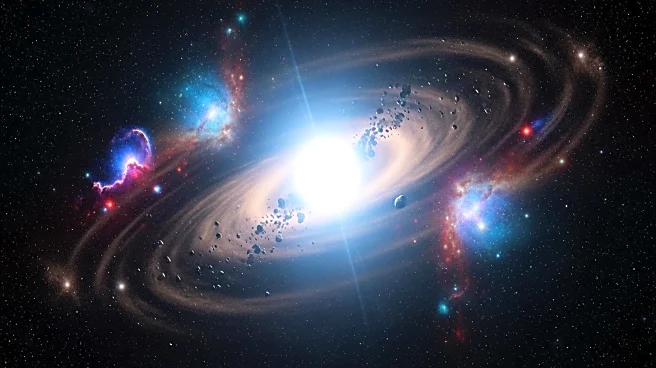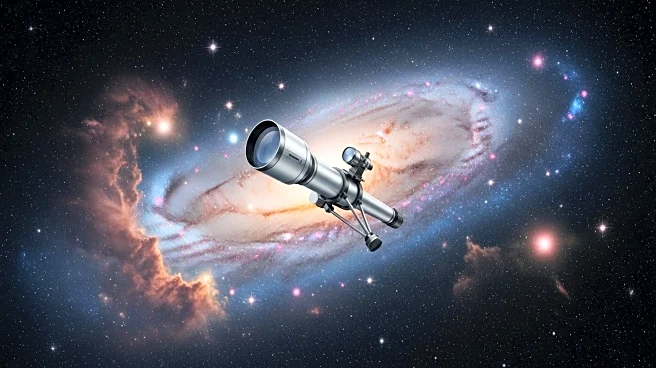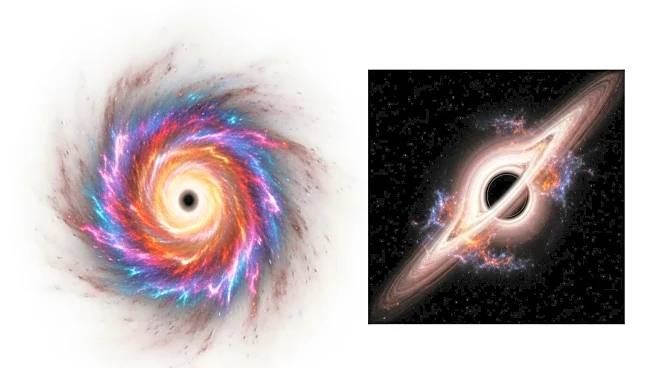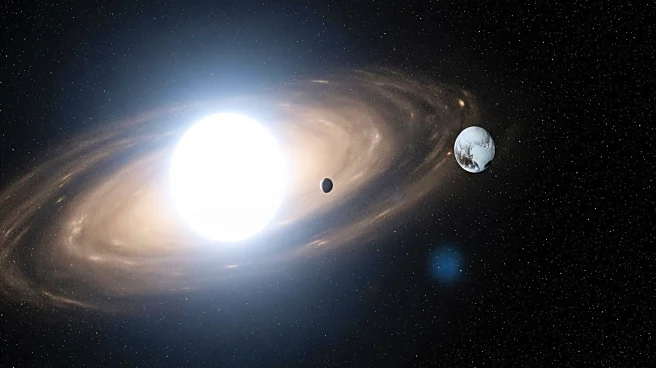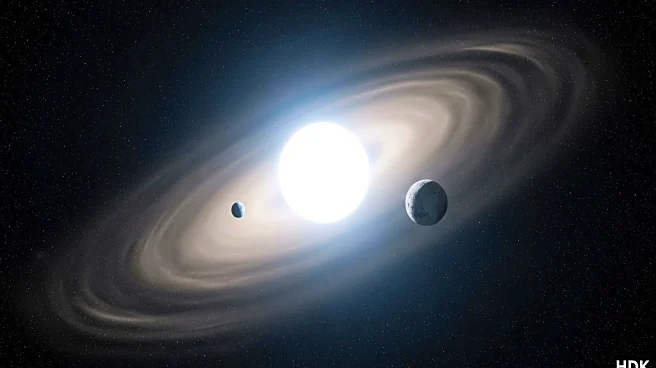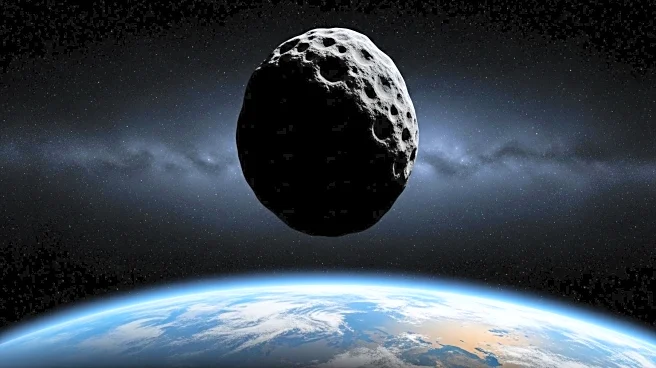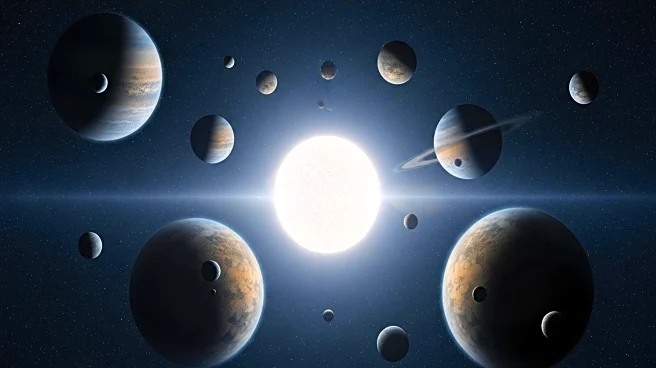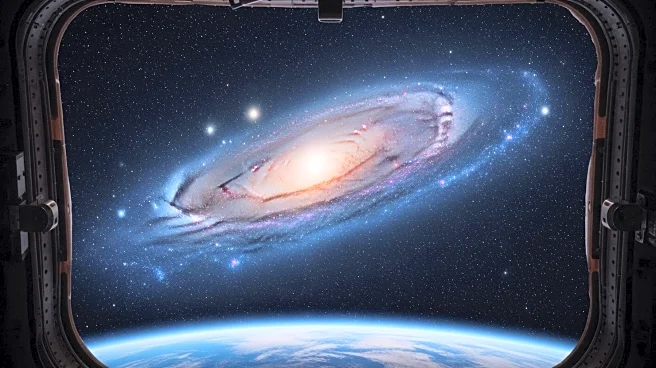What is the story about?
What's Happening?
The Hubble Space Telescope, a joint project between NASA and ESA, has captured new images of the Messier 82 galaxy, also known as the Cigar Galaxy. Located 12 million light-years away in the constellation Ursa Major, M82 is a starburst galaxy, forming stars at a rate ten times faster than the Milky Way. The recent images reveal the galaxy's star-powered heart, shaded by clouds of dust and gas. Hubble's observations, combined with data from other telescopes like NASA's Chandra X-ray Observatory and Spitzer Space Telescope, provide a comprehensive view of the galaxy's stars and the surrounding dust and gas. These insights help astronomers understand the formation and evolution of super star clusters within the galaxy.
Why It's Important?
The detailed observations of Messier 82 contribute significantly to our understanding of starburst galaxies and their role in the universe. By studying the intense star formation and the super star clusters, scientists can gain insights into the processes that drive galaxy evolution. The combination of data from multiple telescopes allows for a more complete picture of the galaxy's environment, enhancing our knowledge of cosmic phenomena. This research not only advances astrophysical science but also supports the development of future observational strategies and technologies.
What's Next?
Future observations and analyses will continue to explore the dynamics of Messier 82 and similar galaxies. The integration of data from the James Webb Space Telescope, which has already begun producing infrared images of M82, will further enrich the understanding of the galaxy's structure and star formation processes. Continued collaboration between international space agencies and the use of advanced telescopes will likely lead to new discoveries about the universe's starburst galaxies.
AI Generated Content
Do you find this article useful?
